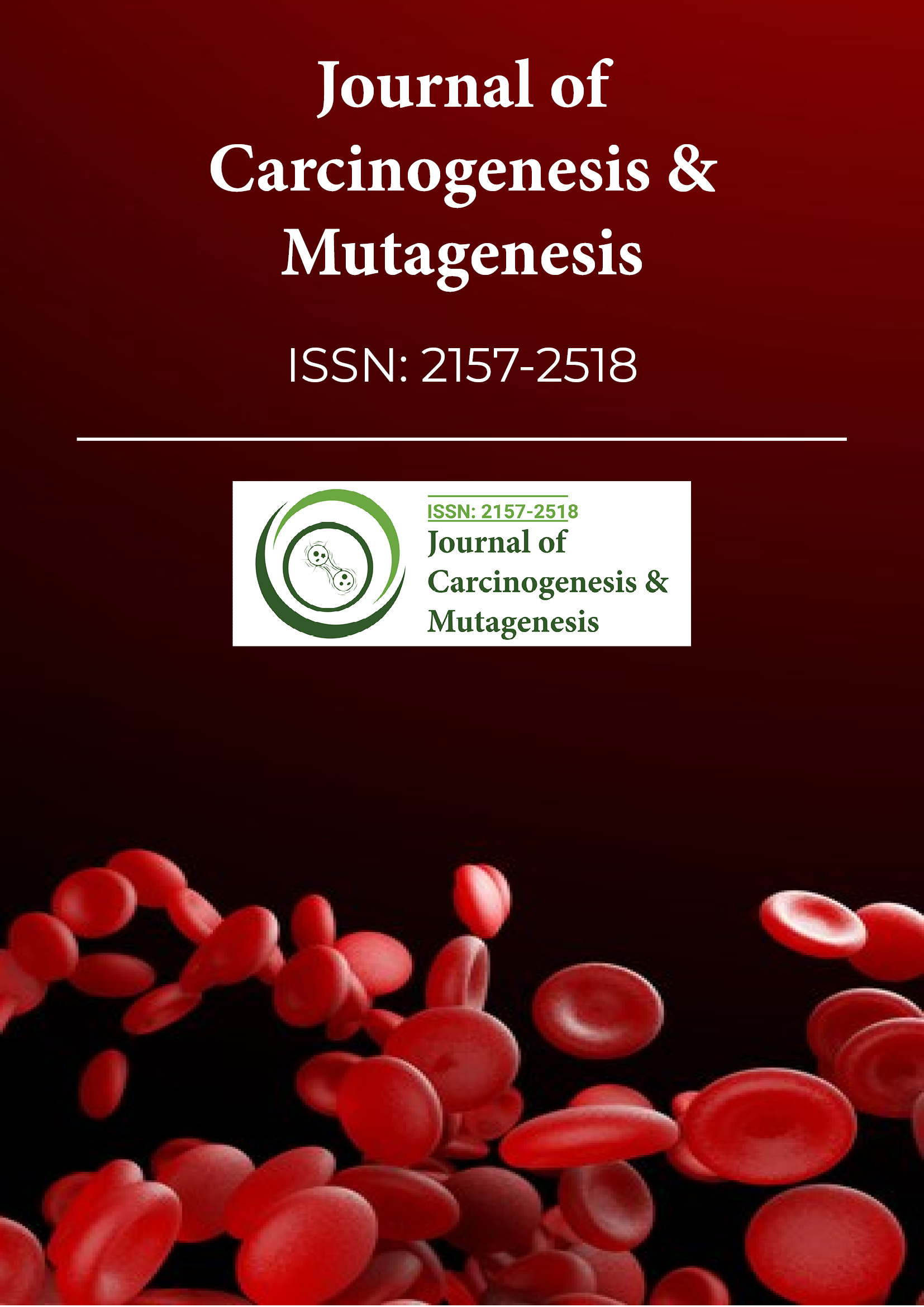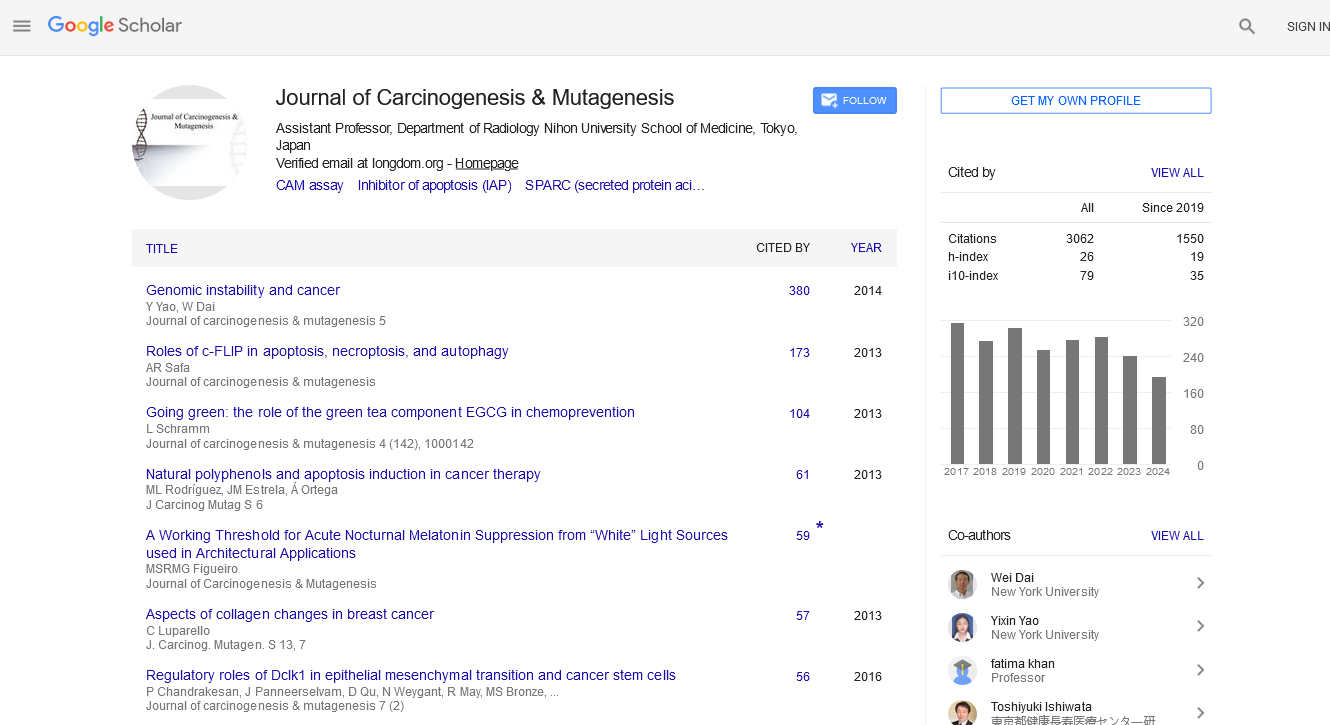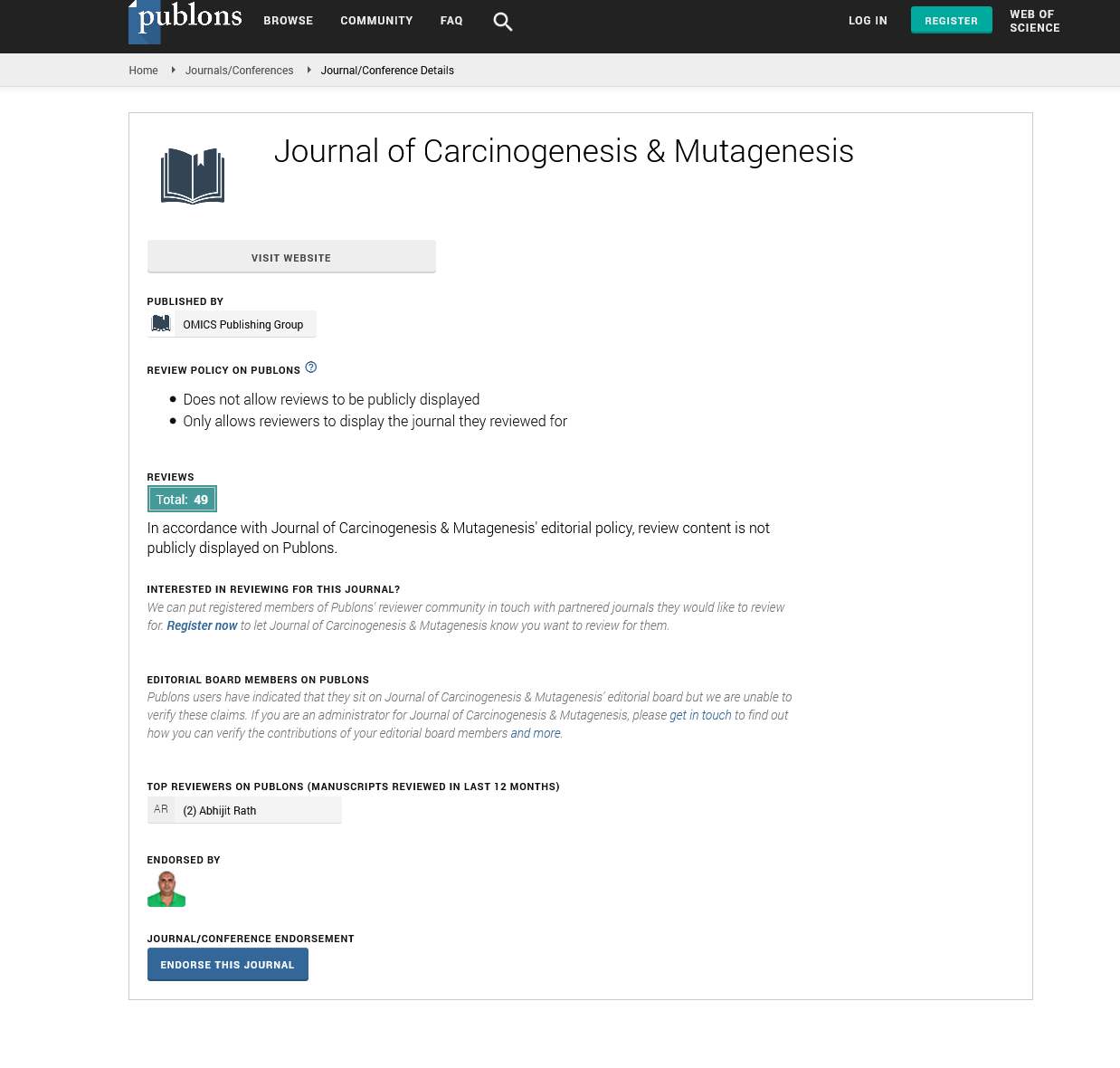Indexed In
- Open J Gate
- Genamics JournalSeek
- JournalTOCs
- Ulrich's Periodicals Directory
- RefSeek
- Hamdard University
- EBSCO A-Z
- OCLC- WorldCat
- Publons
- Geneva Foundation for Medical Education and Research
- Euro Pub
- Google Scholar
Useful Links
Share This Page
Journal Flyer

Open Access Journals
- Agri and Aquaculture
- Biochemistry
- Bioinformatics & Systems Biology
- Business & Management
- Chemistry
- Clinical Sciences
- Engineering
- Food & Nutrition
- General Science
- Genetics & Molecular Biology
- Immunology & Microbiology
- Medical Sciences
- Neuroscience & Psychology
- Nursing & Health Care
- Pharmaceutical Sciences
Commentary - (2025) Volume 16, Issue 1
The Science of Cell Transformation from Lab Techniques to Cancer Research
James Finley*Received: 01-Jan-2025, Manuscript No. JCM-25-28585; Editor assigned: 03-Jan-2025, Pre QC No. JCM-25-28585 (PQ); Reviewed: 17-Jan-2025, QC No. JCM-25-28585; Revised: 24-Jan-2025, Manuscript No. JCM-25-28585 (R); Published: 31-Jan-2025, DOI: 10.35248/2157-2518.25.16.465
Description
Cell transformation is a complex biological process through which normal cells undergo genetic and phenotypic changes, acquiring properties that enable them to proliferate abnormally. This transformation can occur naturally or be induced artificially in laboratory settings. It plays a significant role in cancer development, biotechnology, and biomedical research. Understanding the mechanisms, types, and implications of cell transformation is essential for advancing treatments for cancer, gene therapy, and the development of biopharmaceuticals.
There are two major types of cell transformation: natural and artificial. Natural transformation occurs during cancer progression, where mutations in oncogenes or tumor suppressor genes lead to uncontrolled cell growth, resulting in tumor formation. Oncogenic viruses such as Human Papillomavirus (HPV) or Epstein-Barr virus (EBV) can also induce cell transformation. Spontaneous transformation can occur in cell cultures, where cells acquire cancer-like properties over time due to accumulated mutations.
Artificial or laboratory-induced transformation involves techniques designed to introduce new genetic material into cells. Chemical transformation uses agents like ethidium Bromide or Dimethyl Sulfoxide (DMSO) to make the cell membrane permeable to foreign DNA. Electroporation, another method, uses short pulses of high-voltage electricity to create temporary pores in the cell membrane, allowing DNA to enter. Viralmediated transformation employs genetically engineered viruses to introduce genes into target cells, a technique widely used in gene therapy and molecular biology. Calcium phosphate precipitation is another common laboratory method, where the combination of DNA with calcium phosphate allows cells to take up the genetic material.
The molecular mechanisms of cell transformation involve several key processes. One is the activation of oncogenes genes that promote cell growth and division. When mutated or overexpressed, oncogenes drive uncontrolled proliferation, as seen with Ras, Myc, and HER2 genes. Another mechanism is the inactivation of tumor suppressor genes, which normally regulate cell growth and apoptosis. Mutations in genes such as p53, RB1, and BRCA1 allow cells to evade growth control mechanisms, contributing to transformation. Telomerase activation is also a hallmark of transformation, as it allows cells to maintain telomere length, bypassing senescence and enabling indefinite replication. Additionally, genomic instability characterized by chromosomal abnormalities and DNA repair defects further drives the malignant potential of transformed cells.
Cell transformation has numerous applications in scientific research and medicine. In cancer research, transformed cell lines serve as models for studying cancer biology and testing new therapies. In biotechnology and genetic engineering, transformation techniques are used to introduce recombinant DNA into cells, enabling the production of important proteins like insulin, human growth hormone, and monoclonal antibodies. In gene therapy, viral-mediated transformation is employed to deliver therapeutic genes into patient cells, offering potential treatments for genetic disorders and chronic diseases. Transformation is also instrumental in vaccine development, particularly in the creation of viral vectors used for immunization.
In conclusion, cell transformation is a fundamental biological process with far-reaching implications in cancer biology, biotechnology, and medicine. Whether occurring naturally or induced artificially, it plays an important role in scientific research and therapeutic development. As new technologies continue to emerge, the study and application of cell transformation will remain at the forefront of medical and biotechnological innovation, driving progress toward more effective treatments and innovative discoveries.
Citation: Finley J (2025) The Science of Cell Transformation from Lab Techniques to Cancer Research. J Carcinog Mutagen. 16:465.
Copyright: ©2025 Finley J. This is an open-access article distributed under the terms of the Creative Commons Attribution License, which permits unrestricted use, distribution, and reproduction in any medium, provided the original author and source are credited.


